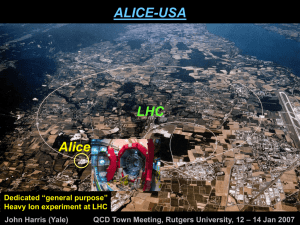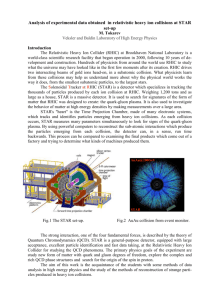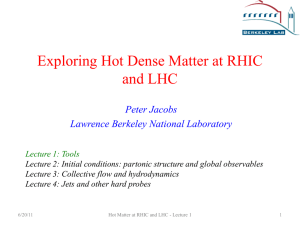Summary of Workshop on Heavy-Ion Physics at LHC - Indico
advertisement
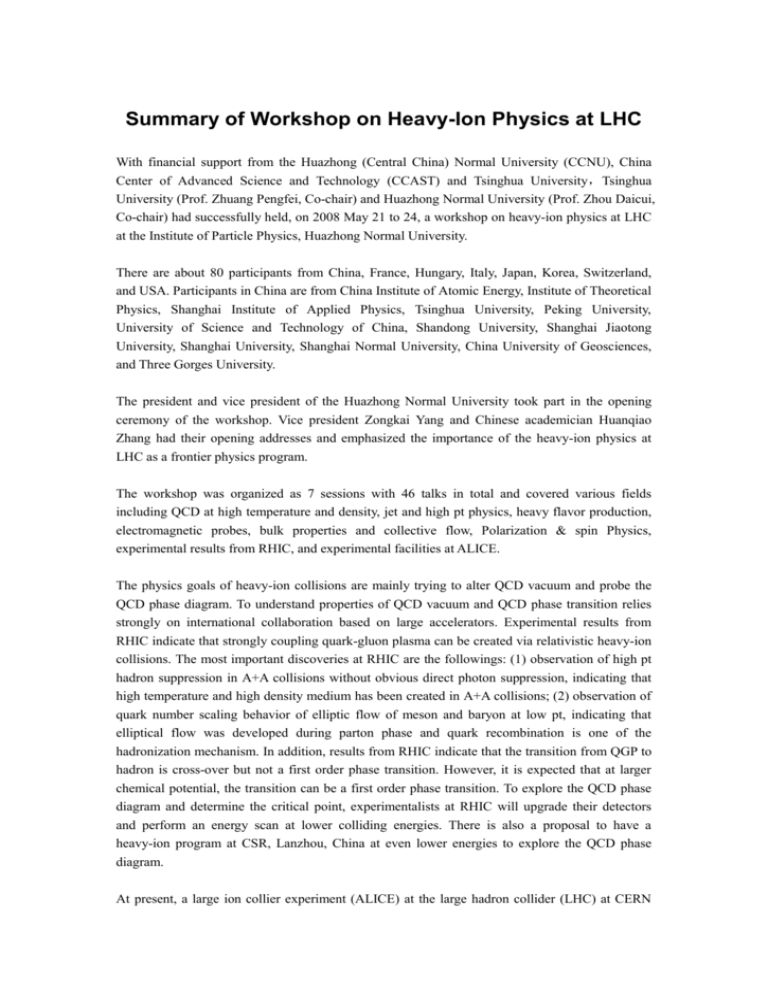
Summary of Workshop on Heavy-Ion Physics at LHC With financial support from the Huazhong (Central China) Normal University (CCNU), China Center of Advanced Science and Technology (CCAST) and Tsinghua University,Tsinghua University (Prof. Zhuang Pengfei, Co-chair) and Huazhong Normal University (Prof. Zhou Daicui, Co-chair) had successfully held, on 2008 May 21 to 24, a workshop on heavy-ion physics at LHC at the Institute of Particle Physics, Huazhong Normal University. There are about 80 participants from China, France, Hungary, Italy, Japan, Korea, Switzerland, and USA. Participants in China are from China Institute of Atomic Energy, Institute of Theoretical Physics, Shanghai Institute of Applied Physics, Tsinghua University, Peking University, University of Science and Technology of China, Shandong University, Shanghai Jiaotong University, Shanghai University, Shanghai Normal University, China University of Geosciences, and Three Gorges University. The president and vice president of the Huazhong Normal University took part in the opening ceremony of the workshop. Vice president Zongkai Yang and Chinese academician Huanqiao Zhang had their opening addresses and emphasized the importance of the heavy-ion physics at LHC as a frontier physics program. The workshop was organized as 7 sessions with 46 talks in total and covered various fields including QCD at high temperature and density, jet and high pt physics, heavy flavor production, electromagnetic probes, bulk properties and collective flow, Polarization & spin Physics, experimental results from RHIC, and experimental facilities at ALICE. The physics goals of heavy-ion collisions are mainly trying to alter QCD vacuum and probe the QCD phase diagram. To understand properties of QCD vacuum and QCD phase transition relies strongly on international collaboration based on large accelerators. Experimental results from RHIC indicate that strongly coupling quark-gluon plasma can be created via relativistic heavy-ion collisions. The most important discoveries at RHIC are the followings: (1) observation of high pt hadron suppression in A+A collisions without obvious direct photon suppression, indicating that high temperature and high density medium has been created in A+A collisions; (2) observation of quark number scaling behavior of elliptic flow of meson and baryon at low pt, indicating that elliptical flow was developed during parton phase and quark recombination is one of the hadronization mechanism. In addition, results from RHIC indicate that the transition from QGP to hadron is cross-over but not a first order phase transition. However, it is expected that at larger chemical potential, the transition can be a first order phase transition. To explore the QCD phase diagram and determine the critical point, experimentalists at RHIC will upgrade their detectors and perform an energy scan at lower colliding energies. There is also a proposal to have a heavy-ion program at CSR, Lanzhou, China at even lower energies to explore the QCD phase diagram. At present, a large ion collier experiment (ALICE) at the large hadron collider (LHC) at CERN will start to operate at much higher energy compared to RHIC energies in this year. Pb+Pb collisions will have energy of 5.5 A TeV in center-of-mass system. Thus, a large part of the talks is devoted to LHC physics from theoretical predictions to experimental progresses and observable. First of all, what would be the answers to the questions extrapolated from RHIC studies to the LHC energy regime? There are many interesting theoretical predictions: (1) it is expected at much higher energy, the cc-bar will be more copiously produced at LHC. The production mechanism of J/ψ will change from prompt hard process dominated at RHIC, to thermal charm production and regeneration process at LHC, resulting in J/ψ enhancement at LHC; (2) it is expected that di-jet events can be more sensitive to parton energy loss compared to single jet events; (3) new developments on J/ψ dissociation near critical temperature of phase transition; (4) D-meson correlation as a probe of QGP; and (5) phenomenological model prediction on QCD phase diagram and its comparison to the results from LQCD. Experimentally, with much higher colliding energy, the quark matter formed at LHC should have much higher energy density and much longer life-time, jet, cc-bar and bb-bar cross sections will increase dramatically compared to RHIC energies, and small x physics becomes also accessible. The progress of ALICE experiment and its running plan has been overviewed in the workshop. V0, EMCAL, PHOS and MUON detectors and its physics potentials have been presented with emphases on jet reconstruction, measurement of direct photon, gamma-jet correlation, D-meson and other heavy flavor reconstructions. In addition, representative from ATLAS has also presented the physics potential of ATLAS on heavy-ion physics. Whether there will be a surprise at ALICE or ALICE will just be a copy of RHIC with only denser and longer live matter is a difficult question to answer. We can always expect some surprises from much higher colliding energy. Compared to detectors at RHIC, ALICE is more sophisticated detector with much better physics performance. In addition, with much higher colliding energy and luminosity, it is possible to detect very rare processes such as production of very heavy particles. ALICE Wuhan group is trying to measure Z0 production at Pb+Pb collisions with aim of probing whether weak vacuum can be altered in ultra-relativistic heavy-ion collisions. All participants are looking forward to LHC run and expect new discoveries from ALICE to fully understand the formation and evolution mechanism of QGP. In addition, all participants suggest to strength the cooperation among institutes in China, between China and oversea scholars, between theorist and experimentalist and expect a new breakthrough in heavy-ion physics at LHC.
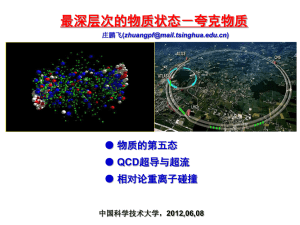
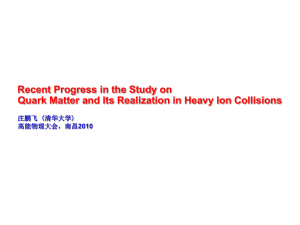
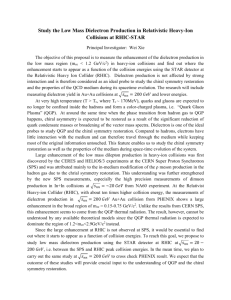


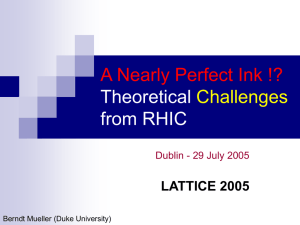
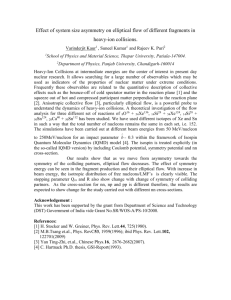
![Lecture 3 [pptx] - Triangle Universities Nuclear Laboratory](http://s2.studylib.net/store/data/005775243_1-37c3b33c412a7530285b46f51206c4ad-300x300.png)
